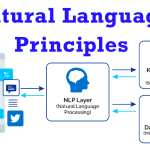In today’s interconnected digital landscape, the ability of various applications and services to communicate with one another is paramount. Integration APIs (Application Programming Interfaces) play a crucial role in enabling this connectivity, allowing different software systems to interact seamlessly. This article explores what integration APIs are, their types, benefits, challenges, and their future in an increasingly digital world.
What Are Integration APIs?
Integration APIs are interfaces that allow different software applications to communicate and exchange data with each other. They act as intermediaries, enabling developers to access the functionalities of one application from another without needing to understand the underlying code or architecture.
APIs can be categorized into several types, including:
- Open APIs (Public APIs): These are available to external developers and organizations, allowing third-party applications to connect and integrate with a service or platform. Examples include APIs from social media platforms like Facebook and Twitter.
- Partner APIs: These are shared with specific business partners and often require authentication. They provide access to certain functionalities of an application that are not available to the general public.
- Internal APIs (Private APIs): These are designed for use within an organization. They facilitate communication between internal systems and applications, enhancing efficiency and interoperability.
- Composite APIs: These APIs allow developers to access multiple endpoints in a single call. They are particularly useful in microservices architectures, where an application may rely on multiple services to perform a function.
How Integration APIs Work
Integration APIs typically work by exposing endpoints that applications can call to perform specific functions. These endpoints accept requests, which are usually formatted in standard data exchange formats like JSON or XML, and return responses that contain the requested data or confirmation of the action performed.
Key components of an integration API include:
- Endpoints: These are specific paths in the API that correspond to certain functions, such as retrieving user data, submitting transactions, or querying product information.
- Request Methods: Common HTTP methods such as GET, POST, PUT, and DELETE are used to specify the action to be performed. For example, a GET request retrieves data, while a POST request submits new data.
- Authentication and Security: Most APIs require authentication to ensure that only authorized users can access certain functionalities. Common methods include API keys, OAuth, and JWT (JSON Web Tokens).
- Rate Limiting: To manage resource usage and ensure fair access, APIs often implement rate limiting, which restricts the number of requests a user can make in a specified time frame.
Benefits of Integration APIs
Integration APIs offer numerous advantages that make them indispensable for modern software development:
- Enhanced Interoperability: APIs enable disparate systems to work together seamlessly, allowing organizations to leverage existing software solutions and services without extensive redevelopment.
- Increased Efficiency: By automating data exchange between systems, APIs reduce manual effort and minimize errors, leading to increased operational efficiency.
- Scalability: Integration APIs allow organizations to scale their operations easily. As businesses grow and evolve, they can integrate new applications and services without overhauling their existing infrastructure.
- Faster Development: Developers can utilize existing APIs to incorporate functionalities without building them from scratch, accelerating the development process and reducing time-to-market.
- Improved User Experience: APIs enable the integration of various services, allowing organizations to offer richer, more seamless experiences to their users. For instance, e-commerce platforms can integrate payment gateways, shipping services, and customer support systems to enhance the shopping experience.
- Innovation and Collaboration: Open APIs foster an ecosystem of collaboration, allowing third-party developers to build innovative applications that complement existing services. This leads to a vibrant marketplace of add-ons and extensions.
Common Use Cases for Integration APIs
Integration APIs are utilized across various industries for numerous purposes, including:
- E-commerce: Online retailers often integrate payment gateways, inventory management systems, and customer relationship management (CRM) tools to streamline operations and enhance the shopping experience.
- Social Media: Social media platforms provide APIs that enable businesses to manage their profiles, post content, and analyze engagement metrics from external applications.
- Healthcare: Integration APIs are used to connect electronic health record (EHR) systems with other healthcare applications, facilitating data sharing among providers and improving patient care.
- Finance: Financial institutions use APIs to enable secure transactions, access customer data, and integrate with third-party services for features like budgeting and investment tracking.
- Travel and Hospitality: Travel companies utilize APIs to access flight schedules, hotel availability, and pricing from various providers, offering customers a comprehensive view of options.
Conclusion
Integration APIs are essential for fostering connectivity and collaboration in today’s digital ecosystem. By enabling seamless communication between disparate systems, they empower organizations to enhance efficiency, drive innovation, and improve user experiences. As technology continues to evolve, integration APIs will play a crucial role in shaping the future of software development, helping businesses adapt to changing market demands and leverage new opportunities. Embracing the power of integration APIs will be key for organizations aiming to thrive in an increasingly interconnected world.



